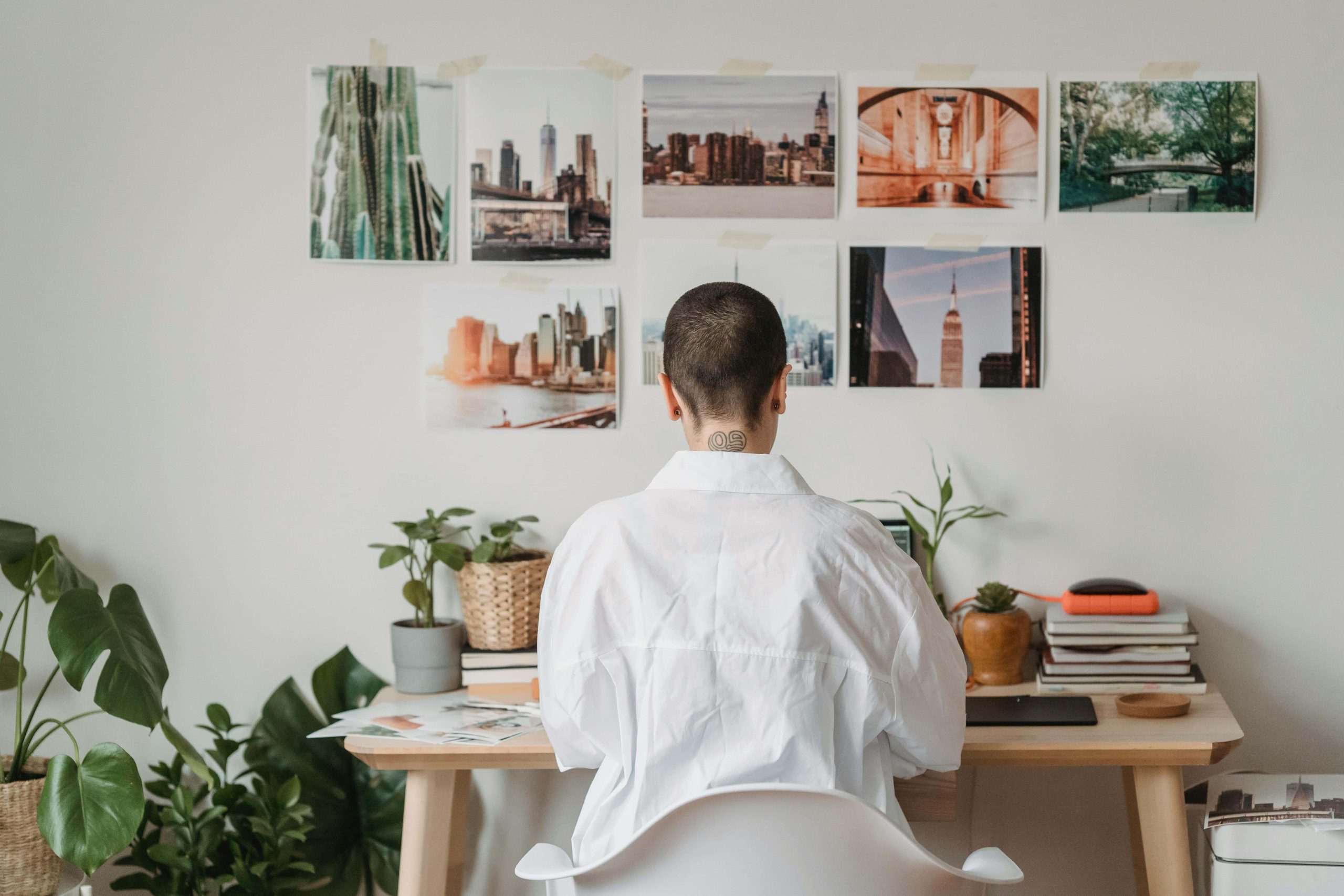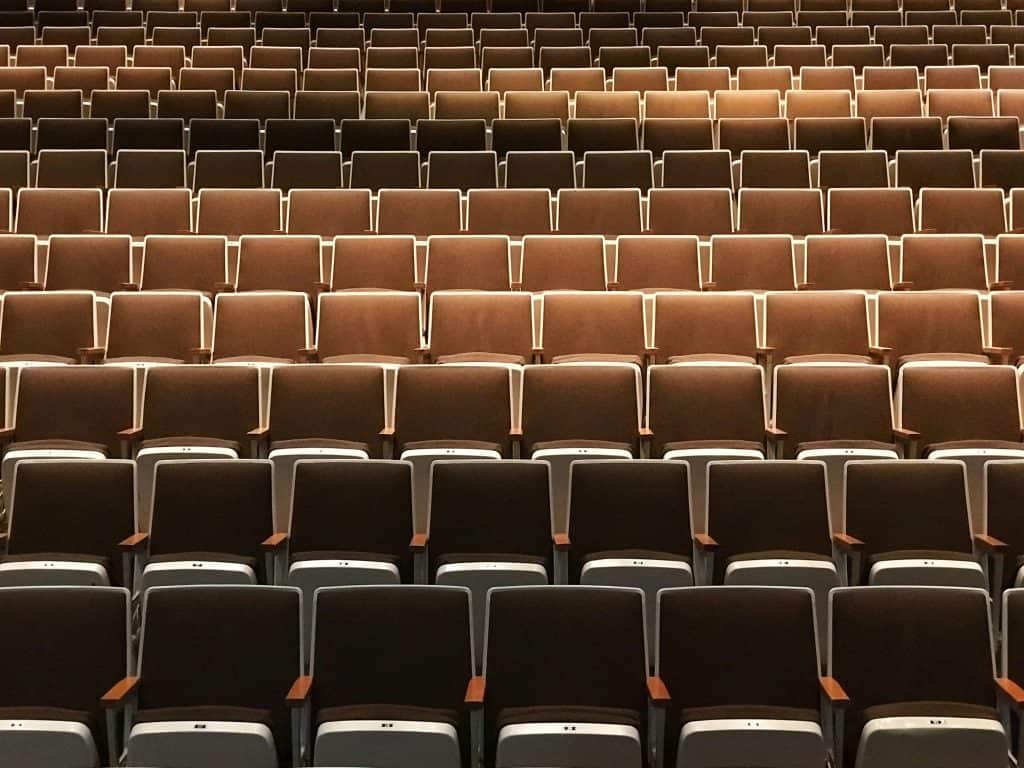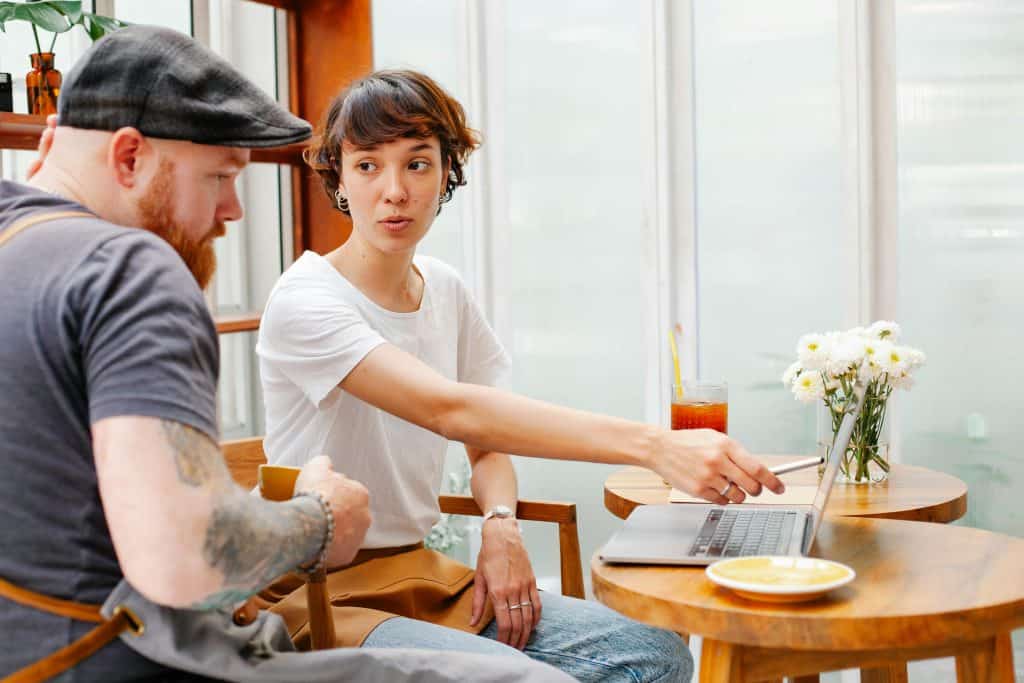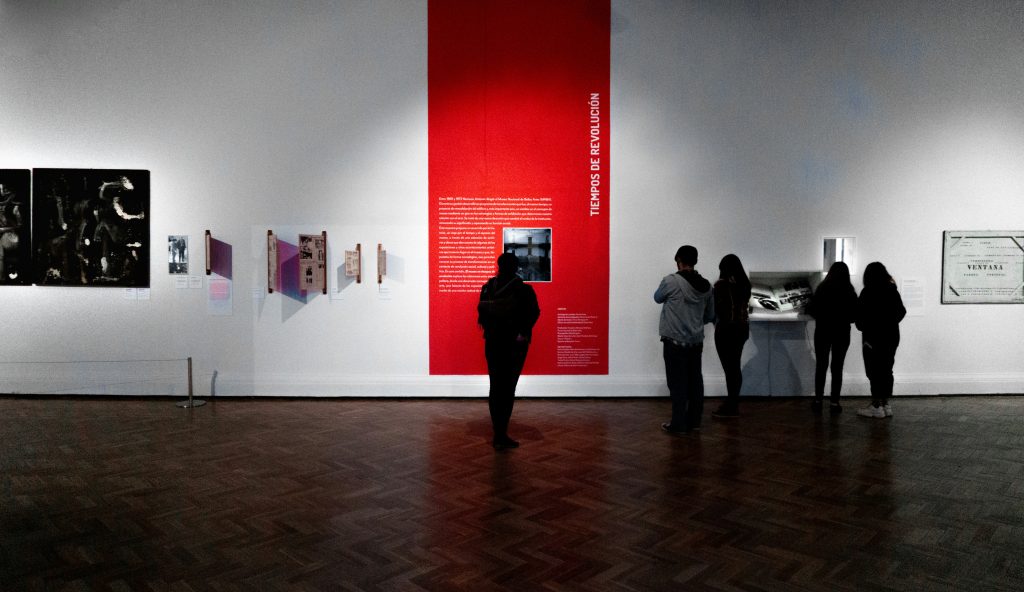
28 Mar Curating a Successful Online Art Show
The proliferation of online art shows reflects the evolving dynamics of the art world, where digital spaces offer unprecedented accessibility and global reach. As physical barriers dissolve, artists and curators alike embrace the virtual gallery as a dynamic platform for creative expression and exploration. While the digital realm opens doors to expansive audiences and diverse artistic voices, it also presents unique challenges. Curators must navigate issues of curation, presentation, and engagement in a virtual environment where physical presence and tactile experiences are absent.
Defining Your Vision

Photo by Tyler Callahan
Theme
Establishing a clear theme or concept for your exhibition serves as the foundational backbone that ties together disparate artworks into a cohesive narrative or aesthetic experience. A well-defined theme provides artists with a framework within which to create and audiences with a roadmap to navigate through the diverse array of works on display. It sets the tone, mood, and overall direction of the exhibition, allowing for a more immersive and engaging experience for everyone involved.
Target Audience
Identifying your target audience is a crucial step in ensuring that your exhibition effectively connects with the people you intend to reach. By understanding the demographics, interests, and preferences of your target audience, you can tailor both the curation and promotion strategies to resonate more deeply with them. This targeted approach not only increases the likelihood of attracting the right attendees but also enhances their overall experience by catering to their specific tastes and interests.
Selection Criteria
Defining specific selection criteria is essential for maintaining curatorial integrity and ensuring that the quality and relevance of the artworks align with the overarching vision of the exhibition. Criteria such as artistic merit, thematic relevance, and technical proficiency serve as benchmarks against which potential submissions are evaluated. By clearly outlining these criteria, curators can make more informed decisions about which artworks to include, thereby shaping the overall narrative and coherence of the exhibition. Additionally, transparent selection criteria help to establish a level playing field for artists and foster trust and credibility within the artistic community.
Selecting Artwork

Photo by Tim Douglas
Open Call vs. Invitations
Deciding between an open call for submissions and extending invitations to select artists involves weighing various factors such as inclusivity, diversity, and artistic vision. An open call encourages a wide range of artists to participate, promoting inclusivity and diversity within the exhibition. It allows for the discovery of emerging talents and provides opportunities for artists from diverse backgrounds to showcase their work. On the other hand, extending invitations to select artists can ensure a more curated selection process, focusing on specific artistic visions or themes. While it may limit the pool of participants, invitations can help maintain a cohesive narrative and ensure that the exhibition reflects the desired artistic direction.
Curation Process
During the curation process, artworks are evaluated based on the criteria outlined in the selection process, with an emphasis on quality, originality, and thematic coherence. Curators assess each submission to determine its artistic merit, considering factors such as technical skill, conceptual depth, and aesthetic appeal. Originality and innovation are valued traits that contribute to the overall richness and diversity of the exhibition. Thematic coherence ensures that the selected artworks contribute meaningfully to the overarching narrative or concept, creating a cohesive and engaging experience for the audience.
Artist Selection
In choosing artworks for inclusion, curators prioritize works that not only align with the exhibition’s vision but also have the potential to engage the audience on multiple levels. Selected works should prompt meaningful dialogue and interaction, sparking curiosity, emotion, and reflection among viewers. Artists whose works provoke thought, challenge perceptions, or evoke visceral responses are often preferred, as they contribute to the exhibition’s depth and impact. By selecting works that resonate with diverse audiences, curators foster inclusivity and accessibility, inviting viewers from different backgrounds to participate in the artistic discourse.
Building the Online Platform

Photo by Vlada Karpovich
Choosing a Platform
When selecting the platform to host your exhibition, it’s crucial to cast a wide net and explore various online venues. From specialized art portals like Artsy or Saatchi Art to popular social media networks such as Instagram or Facebook, each platform offers unique features and audiences. Consider factors such as target demographics, user interface, and the ability to showcase your artwork effectively. By carefully evaluating your options, you can identify the platform that best aligns with your exhibition goals and audience preferences.
Designing the Virtual Space
Crafting a captivating virtual environment is essential for creating an immersive exhibition experience. Start by prioritizing intuitive navigation, ensuring that visitors can easily explore different sections of the virtual space and access artwork and supplementary content without confusion. Pay attention to visual design elements, including layout, color scheme, and typography, to create a cohesive and visually appealing atmosphere. Seamless integration of artwork and supplementary content, such as artist statements or contextual information, enhances the overall narrative of the exhibition and enriches the viewer’s understanding and appreciation of the artworks on display.
Interactive Elements
To enhance viewer engagement and interactivity, consider incorporating various interactive features into your virtual exhibition. Artist interviews provide insights into the creative process and deepen the audience’s connection with the artworks and the artists behind them. Virtual tours offer visitors the opportunity to explore the exhibition space as if they were physically present, fostering a sense of immersion and exploration. Additionally, multimedia presentations, including videos, audio recordings, or interactive installations, add layers of depth and context to the artworks, enriching the overall exhibition experience and encouraging active participation from viewers. By integrating these interactive elements thoughtfully, you can create a dynamic and engaging virtual exhibition that captivates audiences and leaves a lasting impression.
Promotion and Engagement
Photo by Liza Summer
Pre-launch Buzz
When selecting the platform for hosting your exhibition, it’s essential to explore a range of options, from dedicated art portals to social media networks. Consider factors such as the platform’s reach, audience demographics, and functionality. Dedicated art portals offer specialized features tailored to the needs of artists and art enthusiasts, providing a focused environment for showcasing and discovering artworks. Social media networks, on the other hand, offer broader visibility and potential for viral reach, leveraging existing user bases and engagement tools. Evaluate each platform’s strengths and weaknesses to determine the best fit for your exhibition’s goals and target audience.
Social Media Engagement

Crafting an immersive and user-friendly virtual environment is key to enhancing the online exhibition experience. Prioritize intuitive navigation, ensuring that visitors can easily explore the virtual space and access relevant content. Pay attention to visual design elements, including layout, color schemes, and typography, to create an aesthetically pleasing and cohesive experience. Seamless integration of artwork and supplementary content, such as artist statements and contextual information, enriches the viewer’s understanding and appreciation of the works on display. By designing a virtual space that is both visually captivating and easy to navigate, you can create a memorable and engaging exhibition experience for online visitors.
Additional Opportunities
To further enhance viewer engagement, incorporate interactive elements that encourage participation and exploration. Consider including features such as artist interviews, where visitors can gain insights into the creative process and inspiration behind the artworks. Virtual tours offer a dynamic way for viewers to navigate through the exhibition space, simulating the experience of visiting a physical gallery or museum. Multimedia presentations, including videos, audio recordings, and interactive installations, provide additional layers of depth and interactivity, allowing visitors to immerse themselves in the artistic content. By integrating interactive elements into the online platform, you can create a dynamic and interactive exhibition experience that captivates and resonates with your audience.

Photo by Luis Villasmil
Conclusion
The effective curation of online art exhibitions demands meticulous planning across various fronts, including defining themes, selecting artworks, and constructing engaging virtual platforms. By establishing clear themes and selection criteria, curators ensure coherence and relevance throughout the exhibition. Whether through open calls or invitations, the emphasis remains on quality, originality, and thematic consistency to weave a compelling narrative that resonates with audiences. Constructing the online platform involves strategic selection of venues, designing immersive virtual spaces, and integrating interactive elements to enhance user engagement. From generating pre-launch excitement to maximizing social media outreach, effective promotion strategies are vital for attracting diverse audiences and fostering meaningful connections within the art community. Ultimately, the success of online exhibitions lies in their ability to facilitate dialogue, evoke emotions, and inspire creativity, thereby reshaping the landscape of artistic expression in the digital age.
Key Takeaways
- Define a clear theme and target audience
- Establish rigorous selection criteria
- Foster cohesion and resonance in artwork selection
- Choose a suitable online platform for hosting
- Design an immersive and user-friendly virtual space
- Leverage interactive elements for enhanced engagement
- Generate buzz through strategic promotion
- Cultivate meaningful engagement through social media
- Explore diverse opportunities for audience interaction
FAQs
Can anyone submit their artwork to an online art show?
Absolutely, many online art shows embrace inclusivity by welcoming submissions from artists of diverse backgrounds and styles. Open calls are commonly utilized mechanisms through which artists can submit their work for consideration. These opportunities not only provide a platform for emerging talents but also allow established artists to expand their reach and connect with new audiences. The accessibility of online platforms has democratized the art world, enabling artists from around the globe to participate and showcase their creativity in virtual exhibitions.
How can I ensure that my online exhibition stands out amidst the digital noise?
To ensure your online exhibition garners attention amid the vast digital landscape, it’s crucial to prioritize several key elements. Curatorial excellence is paramount; a thoughtfully curated selection of artworks can captivate audiences and convey a compelling narrative or theme. Additionally, investing in the presentation of the exhibition, including high-quality images and user-friendly navigation, enhances the overall viewer experience. Equally important is strategic promotion, leveraging various channels such as social media, newsletters, and art platforms to reach your target audience effectively. By focusing on these aspects, your online exhibition can distinguish itself and attract the attention it deserves.
What role does social media play in promoting an online art show?
Social media plays a multifaceted role in promoting online art shows, serving as a dynamic platform for outreach, engagement, and community-building. Platforms like Instagram, Twitter, and Facebook enable curators to share sneak peeks of artworks, behind-the-scenes glimpses, and interactive content with their followers. By leveraging hashtags, tagging relevant accounts, and engaging with their audience, curators can amplify the visibility of their exhibitions and foster meaningful connections with artists and art enthusiasts worldwide. Moreover, social media facilitates dialogue and encourages participation, enriching the exhibition experience and creating opportunities for feedback and collaboration.
Are virtual events and interactive features essential for online art shows?
While not mandatory, virtual events and interactive features can significantly enhance the online art show experience for both artists and audiences. Virtual events, such as artist talks, panel discussions, and live demonstrations, offer opportunities for deeper engagement and insight into the creative process. Interactive features, such as virtual tours, interactive galleries, and multimedia installations, provide immersive experiences that transcend traditional exhibition formats. These elements not only captivate viewers but also foster a sense of connection and interactivity, transforming passive spectators into active participants. By integrating virtual events and interactive features, online art shows can cultivate a dynamic and inclusive environment that celebrates artistic expression and fosters meaningful connections within the global community.
Understand how “Digital Art and Cross-Cultural Connectivity” works in the contemporary global landscape.

